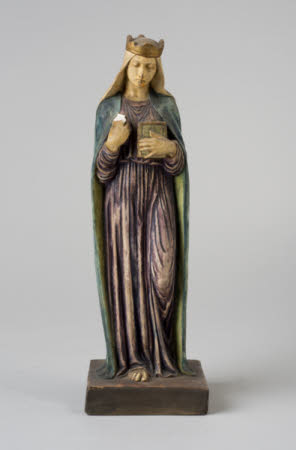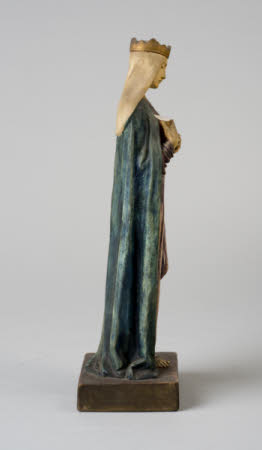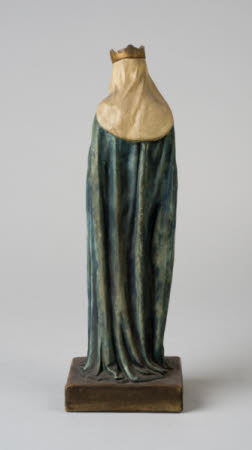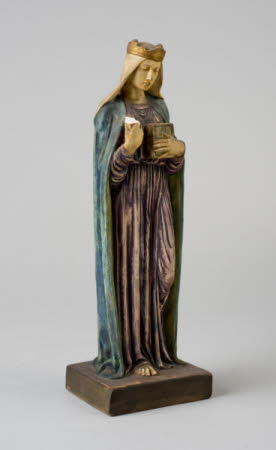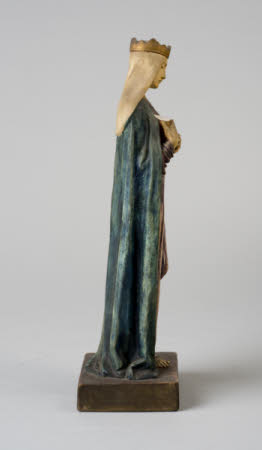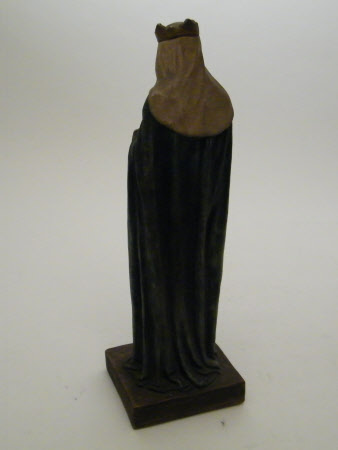Queen St Margaret, Queen of Scotland (1045/6–1093)
Mary Seton Watts (1849 - 1938)
Category
Art / Sculpture
Date
1904 - 1936
Materials
terracotta
Measurements
305 mm (Height)
Place of origin
Compton
Order this imageCollection
Fenton House, London
NT 1448988
Caption
Mary Seton Watts was a visionary artist, designer and ceramicist. She was the creative force behind the Compton Pottery and the Watts Chapel, the latter renowned for its fabulous decorative interior. Watts was also actively involved in the suffrage movement. Having trained at the Slade School of Art, she went on to study with sculptor Aimé-Jules Dalou (1838–1902), whose work in terracotta must have made a mark on his student. A substantial legacy from her father meant Watts was financially independent; she rented a studio in Pimlico, London, and began to teach clay modelling at a local boys’ school. She was also a member of the Home Arts and Industries Association, which taught traditional crafts to ensure their survival and help overcome poverty in rural areas. Watts married the artist George Frederic Watts (1817–1904) in 1886 and they built a home together – Limnerslease in Compton, Surrey. Mary designed its gesso ceilings and other decorative features. By 1899 she had founded the Compton Pottery – part business, part social and educational enterprise – later known as the Potters’ Arts Guild. Its first products were terracotta garden ornaments sold through Liberty & Co., made using red terracotta clay from a seam on the property, and gravestones – all designed by Watts. A range of small decorative items, including boxes, figures and vases were made using fine clay brought in from Dorset, and sold in the Pottery showroom. They were hand-painted using an egg- and ammonia-based medium, then waxed or varnished, but not glazed, which meant that the coloured surfaces were susceptible to flaking, especially if washed. The pottery continued to operate until the 1950s. Another major achievement was the design and building of the Watts Cemetery Chapel. Watts led this work, which took almost a decade to complete and was undertaken in collaboration with villagers she had trained to model in terracotta. The building is adorned with their complex architectural reliefs incorporating Celtic and Art Nouveau imagery, the interiors covered with experimental gesso relief panels painted in jewel-like colours.
Summary
Figure of St Margaret, earthenware with cold-painted decoration, standing on a square base, holding a bible in her left hand, Compton Pottery, ca 1904-36; the cloak painted blue and dress purple, gilt to crown and bible.
Makers and roles
Mary Seton Watts (1849 - 1938)
References
Conroy, Rachel, Women Artists and Designers at the National Trust, 2025, pp. 142-3
